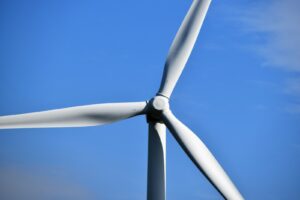Governments and industry must rebuild confidence in offshore wind
The Energy Transitions Commission (ETC) – a coalition of leaders from across the global energy landscape – are calling on governments and industry to work together to rebuild confidence in the offshore wind market and bring costs down.
In a new briefing document: ‘Overcoming Turbulence in the Offshore Wind Sector’ the ETC call for co-operation to get offshore wind back on track, and generation to the levels it needs to be.
2022 and 2023 were difficult times for offshore wind, with the effects of Covid and Russia’s invasion of Ukraine creating supply chain bottlenecks and shortages which drove up the cost of steel by 200%, resulting in many projects and contracts being cancelled.
The report emphasises that most of these drivers were temporary in nature and offshore wind should not be seen as being in crisis, rather that it is ready to bounce back.
In the seven years prior to 2022, costs in Western Europe had fallen 60%, while global capacity expanded six-fold, from 12GW to 74GW, producing energy for around 90 million households.
The report also points out that China have made huge cost savings through technological progress and large-scale production, illustrating that offshore wind can be even cheaper and more competitive in the future.
The International Energy Agency have suggested that to achieve a net-zero economy built on clean electricity, annual wind generation needs to grow ten-fold between 2022 and 2050. However, most countries are not on track to install sufficient offshore wind capacity by 2030 to align with this trajectory.
The ETC report states that to rectify this, governments and industry must work together to rebuild confidence in offshore wind.
Specifically they should:
- Set ambitious targets and predefined auction schedules, which ensure large-scale volumes committed and delivered year by year.
- Design auctions and government-backed contracts to reduce the risks of non-delivery. Changes should include inflation-indexation to reduce developer risks and greater penalties for withdrawing from contracts to reduce contracts being treated as options. Governments must accept paying somewhat higher prices to remove this optionality.
- Streamline planning, permitting and grid connection processes while also reinforcing the grid to reduce waiting times for offshore wind to connect.
- Ensure that wind turbine and component production can achieve economies of scale-based cost reductions by encouraging harmonisation of turbine components and sizes.
- Address specific supply chain bottlenecks through, for example, guarantees and subsidies for new installation vessels to carry larger turbines; and balancing the desire to encourage local supply chain content with the need to achieve high production volumes on a multi-country/regional level.
Adair Turner, Chair, Energy Transitions Commission. said: ‘Offshore wind is vital for the clean energy transition. It can generate electricity when the sun isn’t shining and doesn’t compete for land use. Now is a critical period to rapidly accelerate wind capacity if the world is to achieve net-zero emissions by mid-century.
‘Governments should act now to restore market confidence by setting ambitious offshore wind targets and design auctions and contracts which provide market certainty and drive costs down.’
Alistair Phillips-Davies, CEO, SSE said: ‘The energy system of the future will depend on clean, secure and cost-competitive electricity and this report shows the critical role offshore wind has to play. But to fully realise the technology’s potential, policymakers, system operators, regulators and the industry need to re-focus on scaling up the sector’s capacity. Those that move fastest will unlock significant and lasting economic benefits.’
Rebecca Williams, Chief Strategy Officer – Offshore Wind, GWEC said: ‘This briefing from ETC reinforces the reality that, despite blips in the UK and US last year, the offshore wind industry is on a fundamental global growth trajectory. As the briefing notes, offshore wind has seen huge cost reductions and is cost competitive with gas power. It’s no wonder that governments in every continent are recognising the increasing role that offshore wind plays in keeping the lights on, and providing large scale, cost competitive energy.’
The report is available here.


















